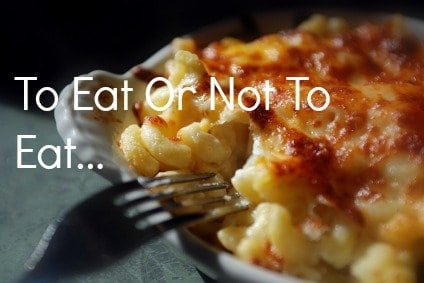Elimination diets are a hot topic in health and nutrition these days. Gwyneth Paltrow even uses the term in her new cookbook, It’s All Good (which I haven’t checked out yet, but hear is quite, well, good, if not all that practical).
I get questions about them all the time from confused clients and readers.
If you’ve ever wondered if an elimination diet is for you, read on.
WHAT is an elimination diet?
Wikipedia defines an elimination diet as “a method of identifying foods that an individual cannot consume without adverse effects. Adverse effects may be due to food allergy, food intolerance, other physiological mechanisms (such as metabolic or toxins), or a combination of these.”
The idea is to remove “target foods” to see if your symptoms – or “adverse effects” – resolve; and then reintroduce each food to see if the symptoms reappear. Symptoms could be anything from general stomach upset to low energy to joint aches to skin issues to “brain fog.”
These food experiments, as I like to think of them, can last anywhere from a couple of weeks to a few months, depending on your goals.
WHY would I do an elimination diet?
If you suspect that you have a sensitivity or intolerance to a particular food or group of foods, you could use an elimination diet to see if your hunch is correct. A typical place to start is with common food allergens, like nuts, dairy, soy, shellfish, caffeine, and gluten. Many people also like to cut out refined sugar and sometimes corn.
Even if you don’t suspect an actual food sensitivity or allergy, doing an elimination diet is a great way to get clear about the “ideal” diet for your body, the way of eating that will make you feel best. (Not to mention that cutting out things like caffeine and sugar for even a short time can reduce cravings.)
HOW do I do an elimination diet?
If you’re just doing it as an experiment, an elimination diet can be a do-it-yourself project.
Start by eliminating all of your “target foods” to see if you feel better. Then, introduce each one back into your diet, one at a time…and remove it again before you add the next food. Note in a food diary what you ate and how you feel – your mood, your energy level, any physical changes/symptoms – with each addition. The idea is to get a sense of how each food affects you on its own, using this process of elimination to determine which foods you might want to minimize or avoid going forward.
If you suspect that you might have a true food allergy – or a more serious medical condition like celiac disease – it’s a good idea to work with a health coach and/or a doctor who can advise and monitor you during your elimination diet.
What can I EXPECT from an elimination diet?
It’s best to go into an elimination diet WITHOUT any expectations. If you can leave behind any assumptions you might have about what’s going on with your body, you’ll likely find truer answers. For example, if you’re convinced that you’re gluten-intolerant before you even begin an elimination diet, you may see things that aren’t really there. (Basic psychology, really.) Best to keep an open mind and see what comes up.
Some places to start + my elimination diet experiment
My favorite elimination diet – and one that you’ve likely seen me mention before – is Clean by Dr. Alejandro Junger, M.D. While Clean is set up to be a full 21-day “cleanse,” you can use the elimination diet list of foods to eat and not to eat as a starting place for your own elimination diet, however you decide to structure it.
You can also do what I did a couple of years ago and just eat according to the elimination diet for a while to see how your feel in general. (I eventually did the full Clean program – it’s the only cleanse I recommend to clients – and found that my energy level was better, my skin looked better, and I felt more alert and focused.) You can read more about that experience here.
For more information and resources about food allergies, FARE (Food Allergy Research & Education) is a good place to start.
So, tell me in the comments:
- Have you ever tried an elimination diet?
- Why did you do it?
- What benefits (or side effects) did you experience?
xoxo,






